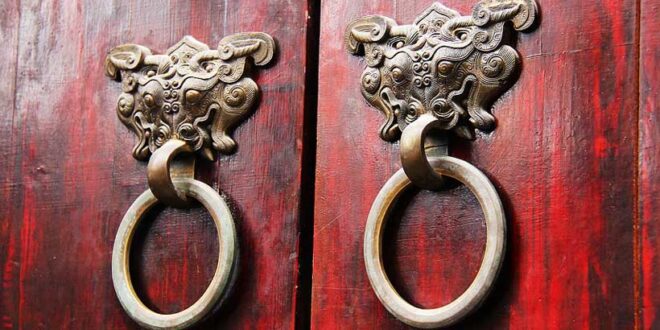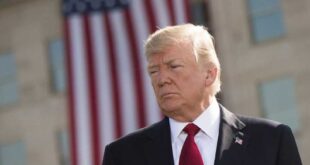Zartaj Chaudhary
As the largest and most populous continent in the world, Asia has a complex history that is full of uncertainties. This region is home to almost half of the world’s population, which is predicted to grow more quickly. It might create approximately 40% of global consumption by 2040 and produce more than 50% of the world’s GDP. Since the end of the cold war, there has been much turmoil and chaos in world order and international politics. Asia is in the middle of a historic transformation as some leading political analysts and statesmen have repeatedly coined different labels to highlight the features of changing global order and major powers’ interest in this region. Asia’s swift rise has given rise to the concept of the ‘21st century as the Asian Century’ mainly because the Asia-pacific region has emerged as the focal point of global politics. The states of this region have shown noticeable potential for economic development which has attracted the major powers to increase networking with them thus paving the way for the Asian century.
HISTORICAL OVERVIEW:
In the past, Asia had a strong understanding of the idea of trade networks and economic cooperation via the Silk Road, which has roots in China’s Han period. During the 18th and 19th centuries, Asia was the poorest continent in the world because it became prey to Europe’s colonialism driven by imperialism. Similarly, in the 20th century, the economic might was in favor of the United States post the two deadly wars which caused the further decline of Asia. Japan which was an Asian power surrendered in 1945, changing the face of global politics. Furthermore, decolonization and the fall of the Soviet Union further enhanced the global dominance of the US. East Asia particularly has recently emerged as an engine for the economic growth of the continent. Japan fought its way back to become the third-largest economy in the world, marking one of history’s most astounding reconstruction periods. The fast-growing economies of Taiwan, South Korea, Singapore, and Hong Kong collectively make up the Four Asian Tigers. Since the 1960s, the economies of all four countries have experienced tremendous industrialization and export-driven expansion. Another major event was China’s rise under Dang Xiaoping’s era, his policies paved the way for China’s economic development.
DAWN OF THE ASIAN CENTURY:
In light of the above-given events and various recent developments, economists and political thinkers are implying that the 21st century is going to be the Asian century and many examples justify this implication as well. Asia’s rise is mainly seen through an economic lens and the following are some of the events which define the 21st century as the Asian Century:
Global Financial Crisis:
Early in the twenty-first century, the world’s financial markets and banking systems were under intense pressure. Due to inadequate financial rules within the nation’s economy, the US experienced the beginning of this crisis, which had a significant impact on all advanced Western economies. In contrast, several Asian economies saw growth and a robust financial sector during the crisis. Since there were no full-fledged balance of payments crises or adjustments in the accounts, Eastern economies had the chance to catch up to Western economies, which were suffering from a serious crisis.
China’s BRI Initiative:
The Belt and Road Initiative (BRI), a trillion-dollar global infrastructure-development program that was publicly presented by China in 2013, aims to link China with the rest of Asia, Africa, the Middle East, Europe, and the Americas. China has provided loans to other countries, primarily in Asia, over the past 10 years to aid in the financing of infrastructure projects in a variety of sectors, including renewable energy, technology, public housing, urban development, transportation and logistics, and more. The BRI is promoting the interconnection and political development of Asia.
Donald Trump’s Administration:
During the presidential election of the US in 2016, Donald Trump was elected, and he adopted a tougher approach to US-China relations. His isolationist policies made China less dependable on them and eventually, his decline as a leader on the world stage provided a strategic opportunity for other countries, like China, to take its place.
COVID-19 Pandemic:
The global community was impacted by the COVID-19 pandemic, which originated in China. Both wealthy and developing countries experienced a distinct kind of crisis. It publicly exposed many of the fundamental problems of advanced Western nations. Asia has made advancements and handled the pandemic better than many developed Western countries in many aspects. Many Asian countries, particularly China, Vietnam, and South Korea, have been impressively quick to contain the virus by instituting statewide lockdowns, speeding up COVID testing, and immediately enacting travel restrictions. Asian nations suffered fewer casualties and recovered more quickly than Western nations. Handling this pandemic is regarded as the beginning of the Asian century.
Role of Government:
Most East Asian countries are autocratic and it is said that dictatorship resulted in favor of Asia. The dragon economies of South Korea, Taiwan, Singapore, Indonesia, and now China experienced their fastest growth under nondemocratic regimes. Asian capitalism is more dynamic and oriented towards industrial policy, infrastructural investment, and export promotion.
FUTURE PROSPECTS:
Owing to strengthening resilience and the ever-increasing speed of its business projects, Asia has displayed potential for corporations to attain long-term goals. The corporate sector can adopt digitalization and narrow the gap between Western and Eastern companies.
By 2040, the economic power of E7 (China, India, Indonesia, Brazil, Russia, Mexico, and Turkey) could be double the size of that of G7 (USA, UK, France, Germany, Japan, Canada, and Italy)
Asia’s digital economy is developing rapidly. It is not only shaping the future of Asia but also the global innovation landscape. Artificial intelligence and digital ecosystems will further provide technological and digital advancements to Asia.
With a population of 1.6 billion urban residents by 2050, Asia will undergo a radical transformation. The hubs of advanced research, technological advancement, and higher education will be found in Asia’s cities, which already produce more than 80% of the continent’s economic output.
CHALLENGES:
Asia is facing many demographic challenges, mostly in East Asia fertility rates have fallen below normal levels, populations are aging and the workforce is declining.
Climate change is another major challenge Asia is facing, it needs to take rapid decisions regarding this to save itself from future disasters.
Though the Asian economy has risen it has also become the center of the global criminal economy. Asia is a significant player in many types of economic crime, including cybercrime, illegal drug manufacture and trafficking, human trafficking, and other forms of smuggling.
Modernization in Asia has given its people a sense of individuality and there is a big chance that they will ask for political participation since the majority of Asian states are still under non-democratic regimes, there is a chance of uprising from people which can harm regional stability.
The increasing assertiveness of China poses a threat to the security of the region and is resulting in increased military buildup.
Massive urbanization and utilization of natural resources to keep up with the increasing demands and lifestyles of people will result in the scarcity of resources.
ASIAN CENTURY OR NEW COLD WAR?
There is a debate that we have entered a new cold war instead of the Asian century because the world has been divided between authoritarian and democratic regimes. The US adopted a Pivot to Asia policy during Obama Administration to re-balancing US strategies towards Asia. Despite having strong relations with South Korea and Japan, the US wants to establish a more comprehensive strategy towards Asia Pacific involving more South Asian countries for the containment of China. Similarly, Biden Administration is further planning on intensifying military and economic pressure to counter the Chinese threat. On the other hand, China is continuing with its assertive behavior, claims on the South China Sea, the BRI project, and the semi-conductor race. On the other hand, it is argued that China and US will not engage in any sort of war because of their interlinked economic and strategic interests. They will put pressure on each other simultaneously cooperating in sectors of common interest.
CONCLUSION:
In short, though the Asian century has arrived and owes a lot of its success to East Asian countries, it’s time that Emerging Asian countries and frontier Asian countries put in more effort to come on the same page as East Asians and deal with the challenges together to make Asia powerful. The rise of Asia also brings hope for poverty alleviation, improved standards of living, and the promotion of sustainable development. The obstacles can be turned into opportunities by strong leadership, collaboration, and proactive policies, assuring a prosperous, interconnected, and peaceful future.
 Geostrategic Media Political Commentary, Analysis, Security, Defense
Geostrategic Media Political Commentary, Analysis, Security, Defense





